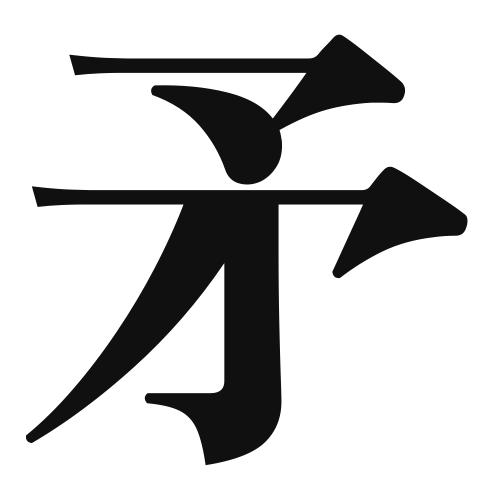1. Overview of Meaning
The kanji “矛” (mou) means “spear” or “halberd.” It represents a type of weapon used in ancient times, symbolizing both offense and defense in combat.
2. Formation and Radical
Formation of the Kanji: The kanji “矛” is a pictogram, originally depicting a spear. It is classified as a ideogram as well, as it conveys the concept of a weapon.
Radical: The radical for “矛” is “矢” (ya), which means “arrow.” This radical is often associated with weapons and archery.
3. Examples of Usage
Common Words and Phrases:
- 矛盾 (mujun) – contradiction
- 矛先 (mou saki) – the point of a spear, metaphorically used to indicate the focus of an attack or criticism
Example Sentences in Daily Conversation:
- この議論は矛盾していると思います。 (Kono giron wa mujun shite iru to omoimasu.) – I think this argument is contradictory.
- 彼の矛先は私に向いている。 (Kare no mousaki wa watashi ni muite iru.) – His criticism is directed at me.
4. Synonyms and Antonyms
Similar Kanji:
- 槍 (yari) – spear, which is a different type of weapon but also used in combat.
Antonyms:
- 盾 (tate) – shield, which represents defense as opposed to the offensive nature of “矛.”
5. Cultural and Historical Background
Relation to Japanese Culture: The concept of “矛” is deeply rooted in Japanese history, where spears were commonly used in warfare. It symbolizes strength and protection.
Proverbs and Idioms: One famous saying is “矛盾の矛” (mujun no mou), which refers to a contradiction, illustrating the dual nature of arguments or situations.
